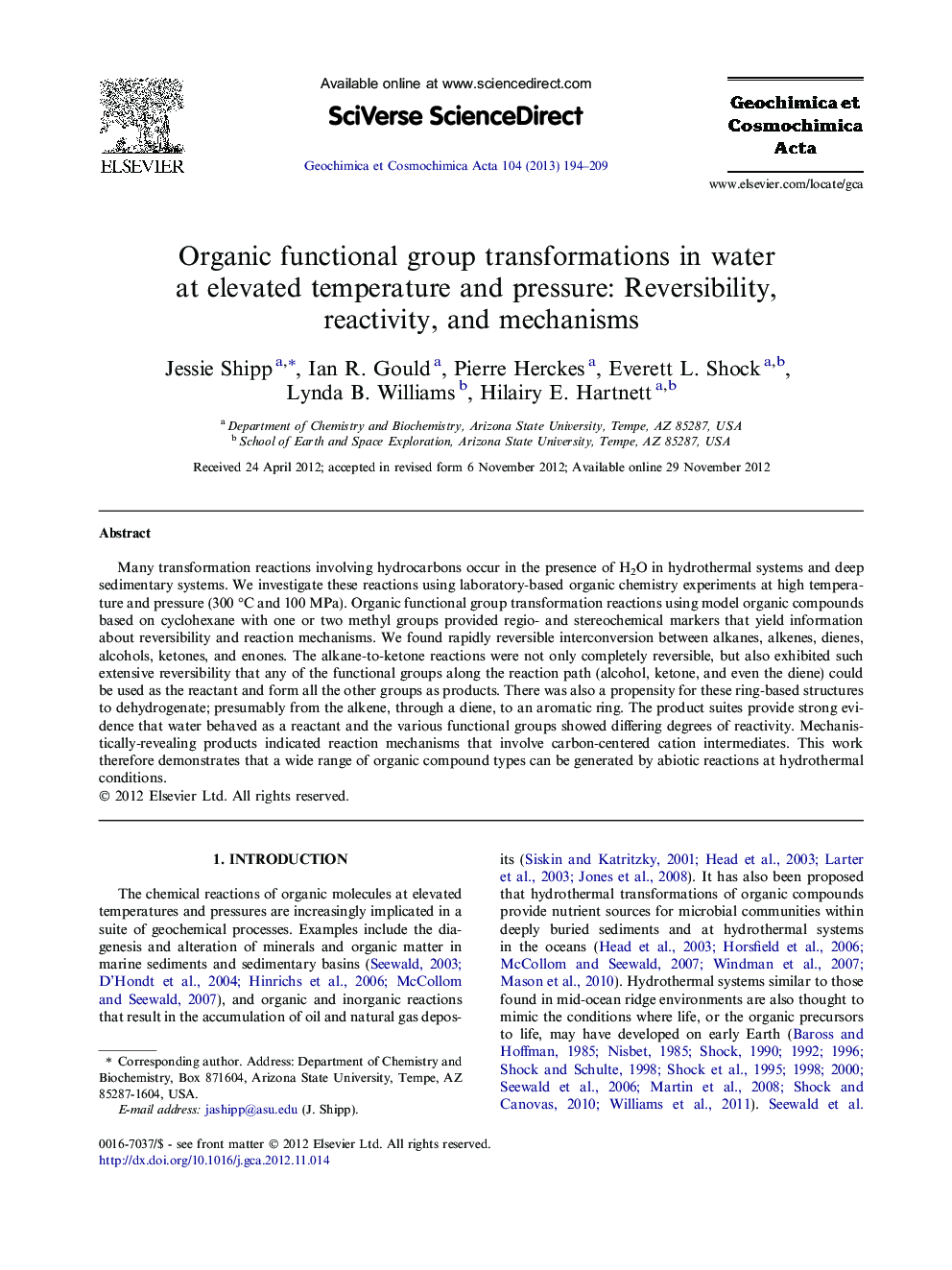| Article ID | Journal | Published Year | Pages | File Type |
|---|---|---|---|---|
| 4702599 | Geochimica et Cosmochimica Acta | 2013 | 16 Pages |
Many transformation reactions involving hydrocarbons occur in the presence of H2O in hydrothermal systems and deep sedimentary systems. We investigate these reactions using laboratory-based organic chemistry experiments at high temperature and pressure (300 °C and 100 MPa). Organic functional group transformation reactions using model organic compounds based on cyclohexane with one or two methyl groups provided regio- and stereochemical markers that yield information about reversibility and reaction mechanisms. We found rapidly reversible interconversion between alkanes, alkenes, dienes, alcohols, ketones, and enones. The alkane-to-ketone reactions were not only completely reversible, but also exhibited such extensive reversibility that any of the functional groups along the reaction path (alcohol, ketone, and even the diene) could be used as the reactant and form all the other groups as products. There was also a propensity for these ring-based structures to dehydrogenate; presumably from the alkene, through a diene, to an aromatic ring. The product suites provide strong evidence that water behaved as a reactant and the various functional groups showed differing degrees of reactivity. Mechanistically-revealing products indicated reaction mechanisms that involve carbon-centered cation intermediates. This work therefore demonstrates that a wide range of organic compound types can be generated by abiotic reactions at hydrothermal conditions.
